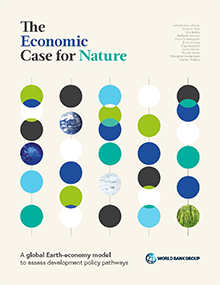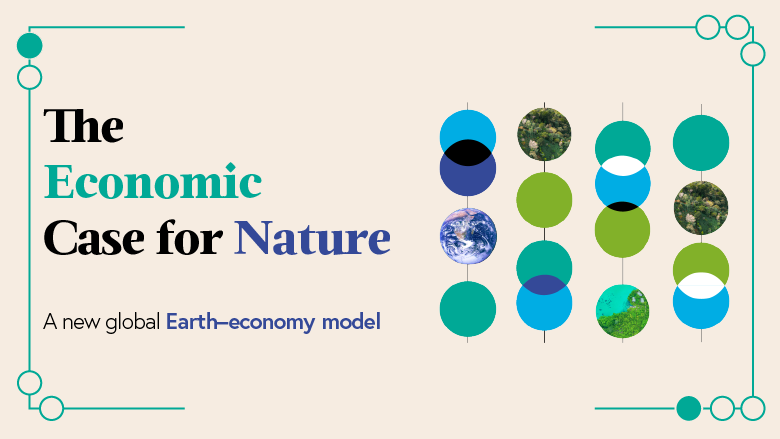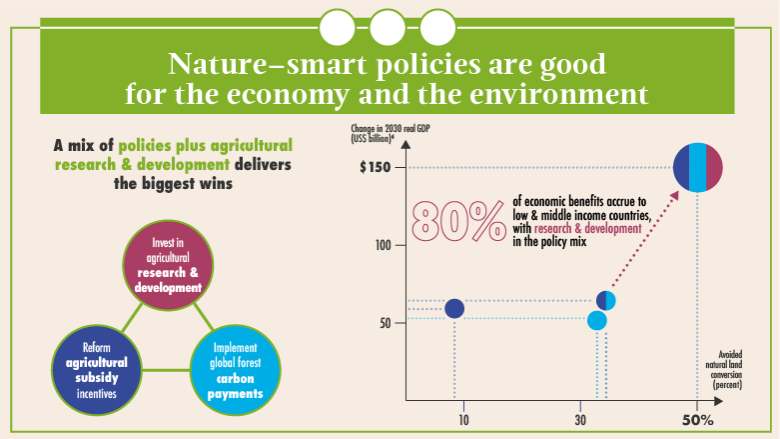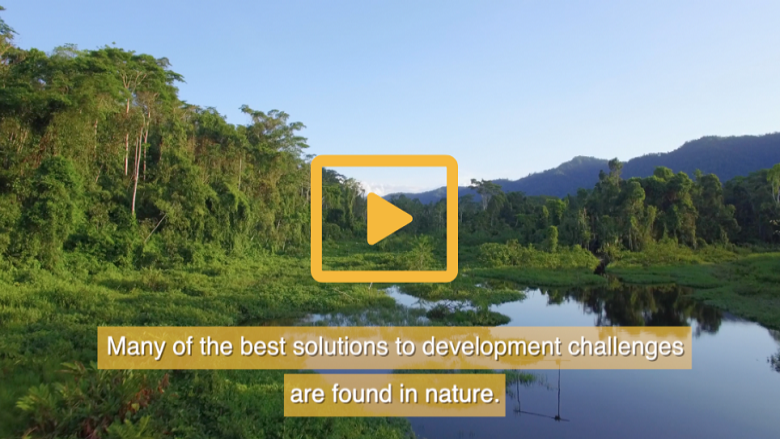


OVERVIEW
The Economic Case for Nature is part of a series of papers by the World Bank that lays out the economic rationale for investing in nature and recognizes how economies rely on nature for services that are largely underpriced. This report presents a first-of-its-kind integrated ecosystem-economy modelling exercise to assess economic policy responses to the global biodiversity crisis. Modeling the interaction between nature’s services and the global economy to 2030, the report points to a range and combination of policy scenarios available to reduce the impact of nature’s loss on economies. This modeling framework represents an important stepping-stone towards ‘nature-smart’ decision-making, as it seeks to support policymakers who face complex tradeoffs involving the management of natural capital, and hence achieving growth that is resilient and inclusive.
This report presents a novel modeling framework that integrates select ecosystem services into a computable general equilibrium (CGE) model. This allows the study of the impact of changes in select ecosystem services on the global economy and vice versa between 2021 and 2030. The report assesses the link between the decline of select ecosystem services—pollination of crops by wild pollinators, climate regulation from carbon storage and sequestration, provision of food from marine fisheries and provision of timber—and the performance of key sectors that rely on these services, such as agriculture, forestry, and fisheries sectors, and related industries.
METHODOLOGY
This report presents a novel modeling framework that integrates select ecosystem services into a computable general equilibrium (CGE) model. This allows the study of the impact of changes in select ecosystem services on the global economy and vice versa between 2021 and 2030. The report assesses the link between the decline of select ecosystem services—pollination of crops by wild pollinators, climate regulation from carbon storage and sequestration, provision of food from marine fisheries and provision of timber—and the performance of key sectors that rely on these services, such as agriculture, forestry, and fisheries sectors, and related industries.
The integrated model is used to compare the baseline (economy-only) scenario with a set of scenarios that simulate the interactions between ecosystems and the global economy to 2030. First, the ‘business-as-usual’ scenario where economic growth leads to a decline in the ecosystem services analyzed, and two, a ‘partial ecosystem collapse’ scenario where pressure on select ecosystems pushes them to tipping points, with dire economic consequences. A third set of scenarios assesses the effects of introducing various nature-smart policy reforms on environmental and economic outcomes in 2030.


